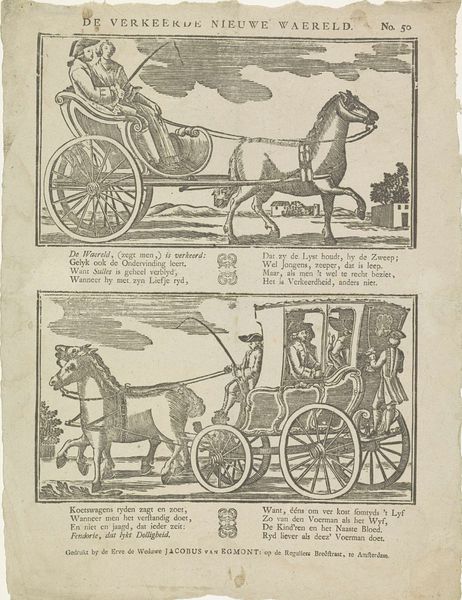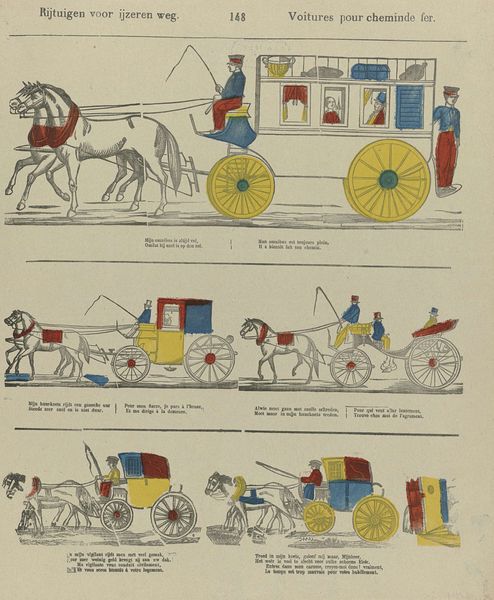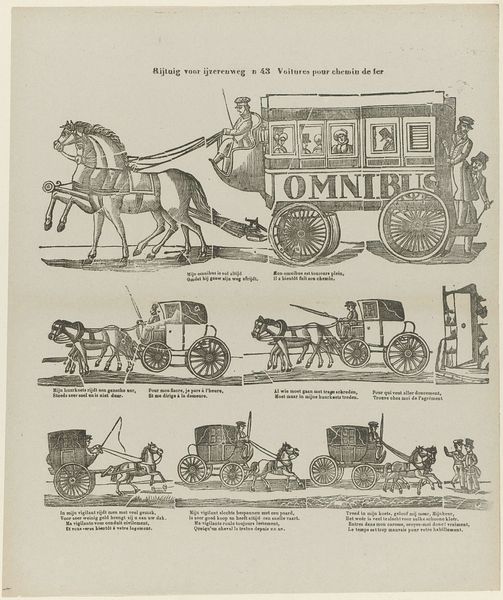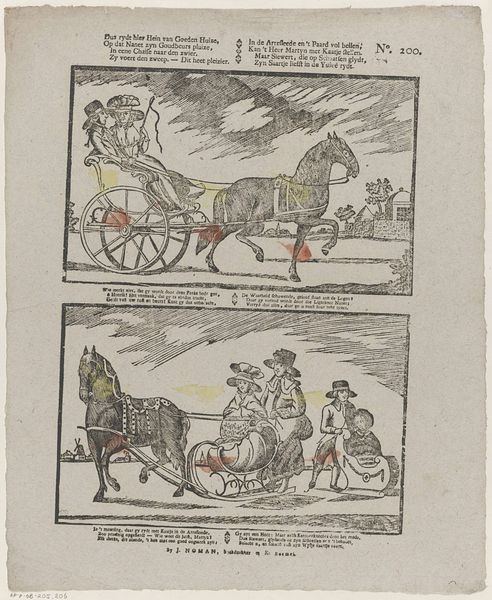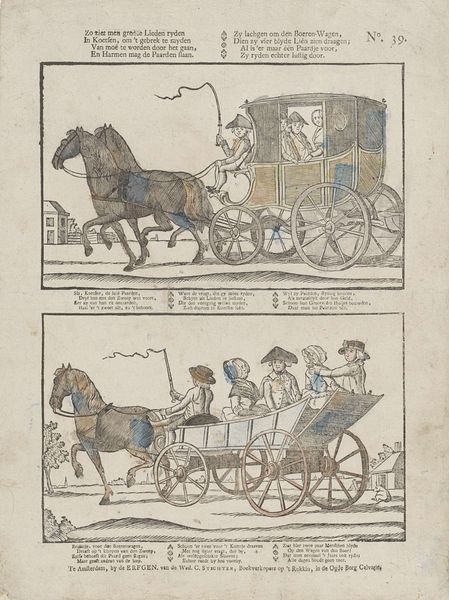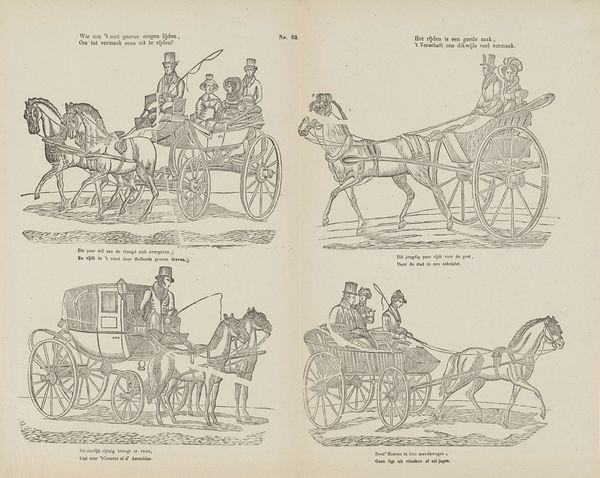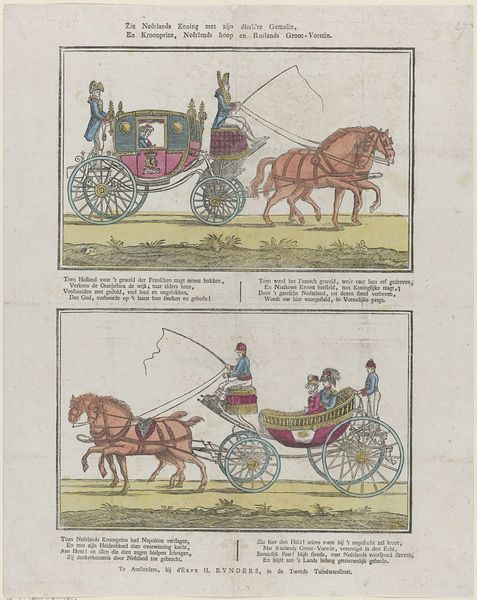
Rytuigen voor yzeren weg / Voitures pour chemin de fer 1800 - 1833
0:00
0:00
drawing, graphic-art, print, engraving
#
drawing
#
graphic-art
#
comic strip sketch
# print
#
landscape
#
figuration
#
romanticism
#
line
#
history-painting
#
engraving
Dimensions: height 419 mm, width 346 mm
Copyright: Rijks Museum: Open Domain
Curator: Editor: This is “Rytuigen voor yzeren weg / Voitures pour chemin de fer,” an engraving by Philippus Jacobus Brepols, dating somewhere between 1800 and 1833. The linear quality and almost diagrammatic arrangement of the carriages is quite intriguing. What strikes you when you look at this print? Curator: The immediate impact stems from understanding its production: engraving. It’s not just a picture; it's a process. Think about the labor involved, the craftsman carefully carving into a metal plate. How does that influence your understanding of these "carriages for iron roads," or early trains? Editor: I hadn’t considered the labor so directly. It’s easy to just see the image, but knowing it’s an engraving forces me to think about the craft involved. Does the medium inform the message, then? Curator: Absolutely! These aren't quick sketches, but carefully reproduced images likely intended for a wider audience. Consider who might have consumed these images and why. Are they advertisements? Educational illustrations? It’s a commentary on the industrial revolution. Also consider the historical context: the emergence of railway as a means of transport for all social classes, facilitated by new technology. How does thinking about this piece in relation to the industrial revolution shift your understanding? Editor: It definitely makes me see the piece as more than just depictions of carriages. These are vehicles of change in a society rapidly being reshaped by technology and labor. The print itself becomes part of that narrative, manufactured and distributed using relatively new printing methods. Curator: Precisely. We’re considering art’s production and consumption together. This engraving reflects a period where materiality, labor, and technology intersected profoundly with society. I wonder if Brepols understood its full implications. Editor: I suppose art is never truly finished, just constantly recontextualized. It all keeps changing! Thanks.
Comments
No comments
Be the first to comment and join the conversation on the ultimate creative platform.

